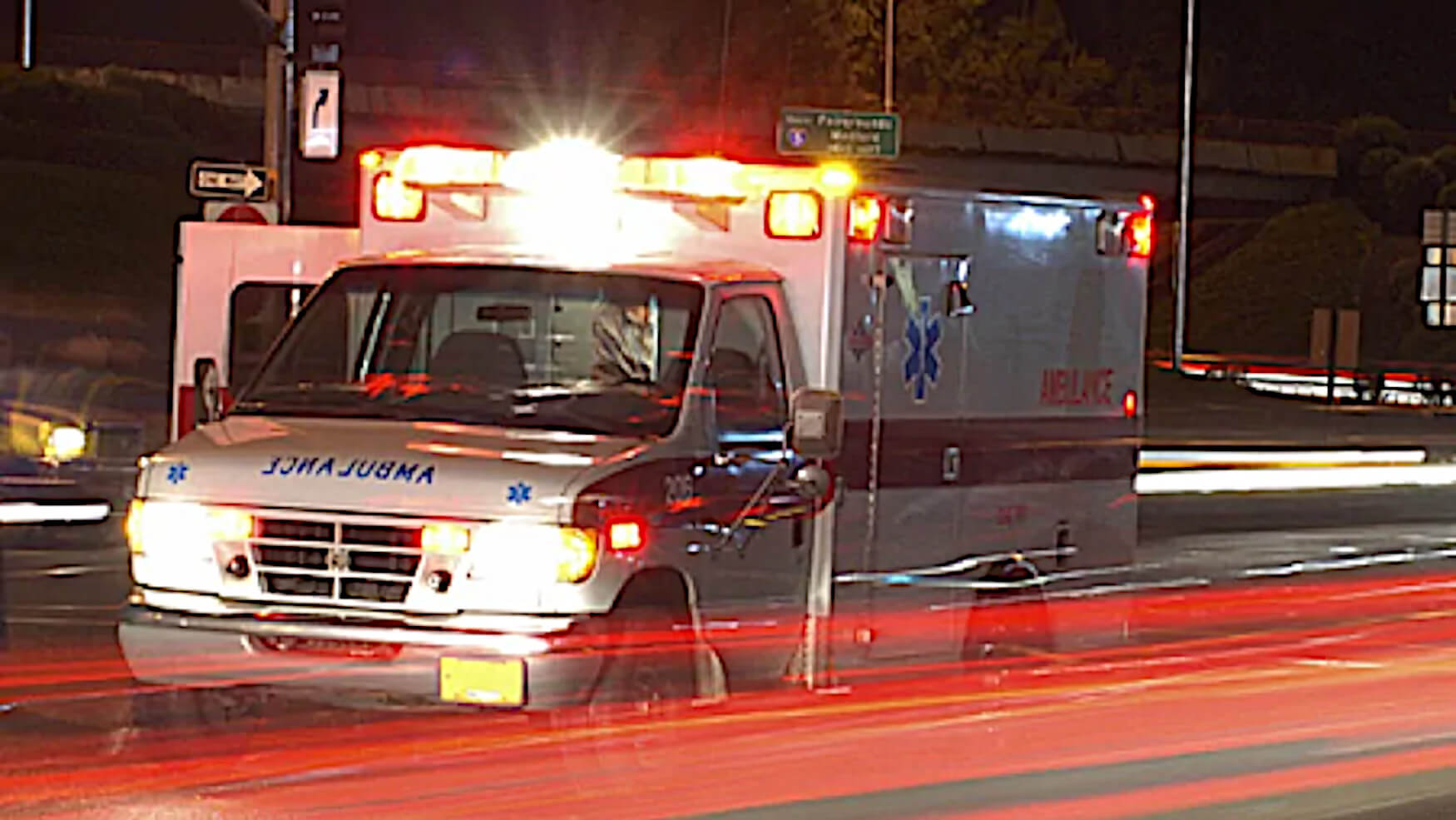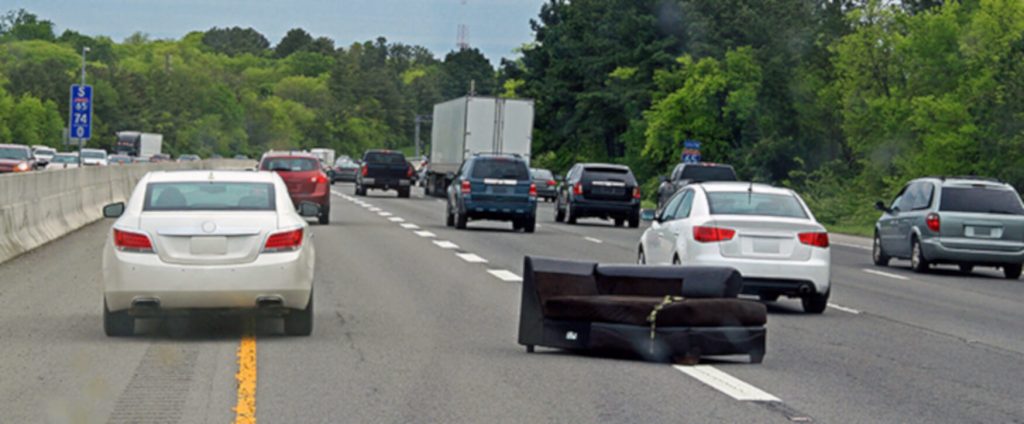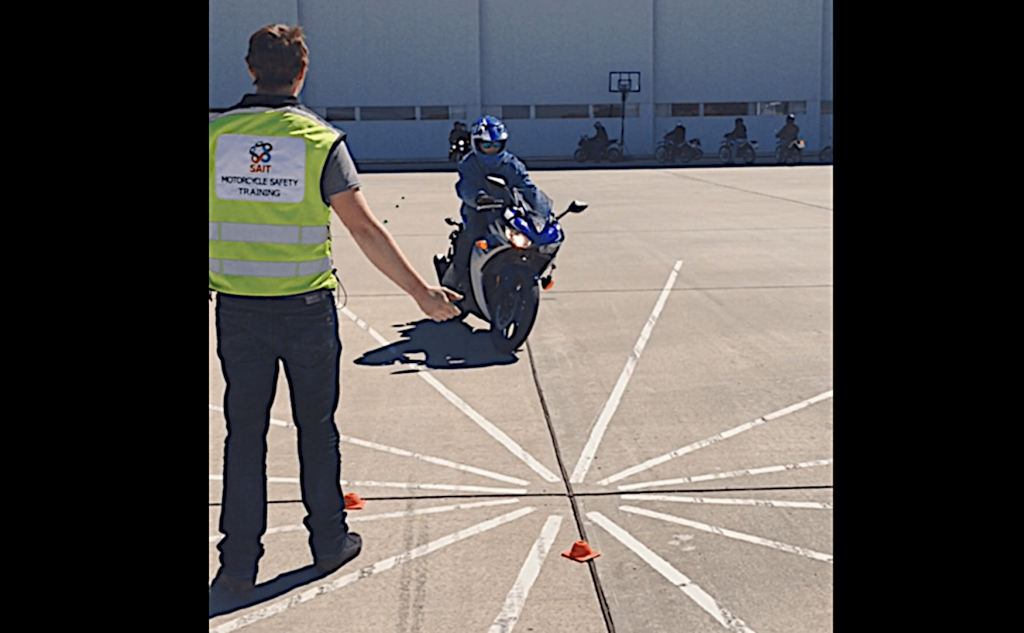This is the thing none of us want to ever have to deal with, but should consistently practice and prepare for. Without preparation, the results of an unexpected situation can be catastrophic.
The Four Essentials to Practice
Hopefully, at this point you’ve already gone over the finer points and practiced them:
It is a good idea to get a handle on these skills prior to attempting emergency maneuvers as now you are in a quicker, potentially more dangerous situation and this is why motorcycle schools are recommended.
Also, as with any part of motorcycling, safety is on the rider and the rider alone. What you chose to do with any information read, is up to you – including your ownership of any repercussions as a result. Now that I’ve gotten this disclosure out of the way, I’ll get into the different types of emergency maneuvers.
Training to React
Photo courtesy of AAA Exchange
Going Over an Object
This is my least favorite method as the possibility of damaging your bike, or worse, crashing is pretty high. That being said, you should be able to technically ride over anything that is below the midpoint of your front tire (not guaranteeing the tire will hold up if there’s any sort of sharp objects that can pop the tire – therefore a potential crash). There is a process to preparing to ride over something, going over and the recovery.
Before Going Over an Object
So you saw that there’s something that fell right in front of you, and not much time or room to choose another maneuver – so you decide to ride over it. Here’s what you’ll need to do first:
Get Your Butt out of the Seat
If possible, stand on the pegs. If you’re on a cruiser, this will likely be very difficult to do, so you might want to tighten the grip of your knees on the tank.
Even Weight on the Pegs
If you are able to stand off the seat of your bike, ensure that both pegs are holding your weight evenly (basically don’t put more body weight on the right or left peg).
Try to Hit It in the Middle & Head On
What I mean by that is, if there’s time and if possible, try to run the object over perpendicular to your bike. If it’s hit at an angle, there’s a chance that the object can spin out and catch something causing you to crash. Kind of the same as if you hit wet train tracks at an angle and your backend washes out.
I’d recommend riding again 90 degrees or perpendicular to tracks or metal cattle guards for that same reason.
Focus Your Gaze Ahead and Keep Your Eyes Alert of What’s Going on Around You
I have a saying that is almost guaranteed. Look down, go down. Don’t fixate on what you’re going over, same as don’t fixate where you don’t want to go.
If something happens and let’s say now you have to swerve around another object right after running over one, it’s better to be able to see it and give as much time as possible to react because even a split second can make a difference.
Hands on the Grips
Make sure that you aren’t opening your hands over the levers as lack of access to the throttle, suddenly gripping the front brake, or cutting power by grabbing the clutch can all lead to crash causing circumstances.
Keep your hands wrapped firmly (not death grip), around the grips but not so tight as you’d lose your throttle control on a sudden lurch of the bike.
Split Second Before You Hit, Apply the Throttle
Basically what you are doing is causing the weight to shift to the back and lighten the front end to allow it to go up and over.
Roll off the throttle to shift the weight forwards as soon as the front tire cleared the object. Again this weight shift forwards will allow an easier up and over for the rear of the bike.
Keep an Eye Out for Changes in Circumstance with Your Eyes and Ears
Anything can happen and preparedness is the key. Surprises can tend to force a freeze reaction and that’s the last thing you want when dealing with a situation like this. Breathe and try your best.
Emergency Braking
I won’t give out all my trade secrets in how I train students to do this, but I will give you this. Think about practicing slamming on your brakes in slow motion. This way it’s not slamming on them, but rather applying gradually increasing force.
Set a point where you want to do a stop, and make sure you are doing a set speed prior to braking. Keep a mental note of that speed because the more you practice, you’ll want to go faster and in shorter distances.
Utilize the front and rear brakes and see what happens. If you lock the front brakes, release a tiny bit and reapply to gain traction. If you lock the rear, hold on to it and don’t let go to avoid potentially high siding yourself. For a more in-depth look on braking, please see this article.
Swerving
My colleague administering the swerve exercise
For this exercise, you won’t use your brakes and should keep the throttle steady, and just like all other emergency maneuvers, hands on the grips and not over the levers to prevent something further from going wrong.
Keep in mind, if you slow down too much, you lose momentum and the forces needed to facilitate counter (push) steering. If you need a refresher or definition on push steering (also known as counter steering), please see the link in the first paragraph of this article.
Object fixation is also something to avoid. If you are going around an obstacle, look to the direction you’re choosing to go around it with – even exaggerate that head movement some as this will ensure that you go in the direction you choose.
I’ve included a picture I took of one of our exercises, which the student is looking and reacting to where he wants to go. Keep in mind, if you continue to look in that direction, you’ll likely end up off-roading (which, unfortunately, I don’t cover in this series), so you’ll want to look back in the direction you want to correct to. Look as far as you can so that you can still be aware of what’s happening up ahead.
Keep in Mind
Practice, Practice, PRACTICE. Reactions to emergency situations may require quick thinking, quick reactions and a combination of the discussed techniques. Practicing these techniques can save your life in the event something actually does happen.
Practice forms muscle memory which will cause your body to naturally react rather than having to think and talk yourself through something. It’s a time and life saver. Don’t just box yourself into a situation thinking that the one reaction is the only correct reaction – be observant of your environment and keep different escapes in mind at all times.
My head instructor had a saying: “you can be right about the situation, or you can be dead right. Your choice.”




